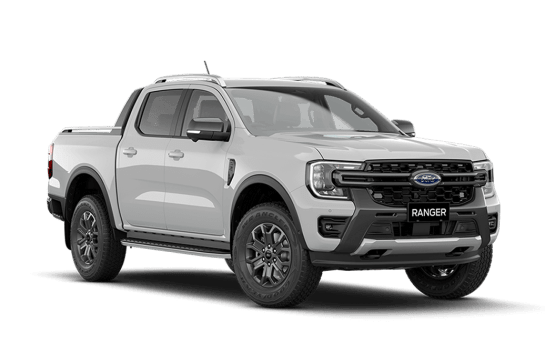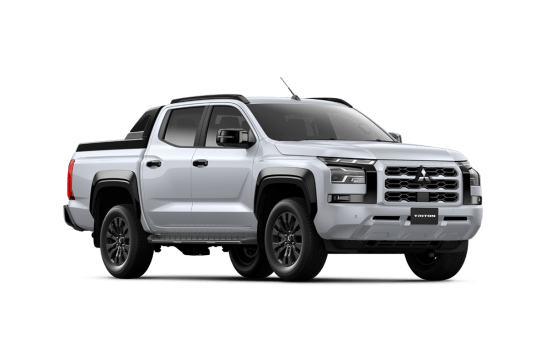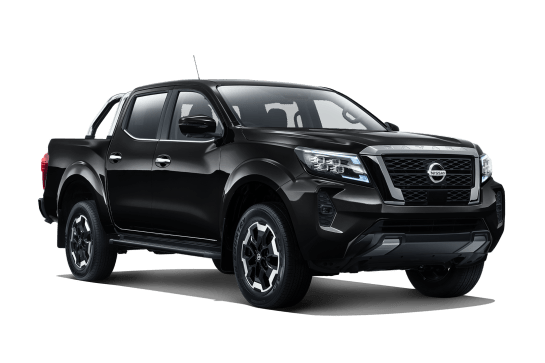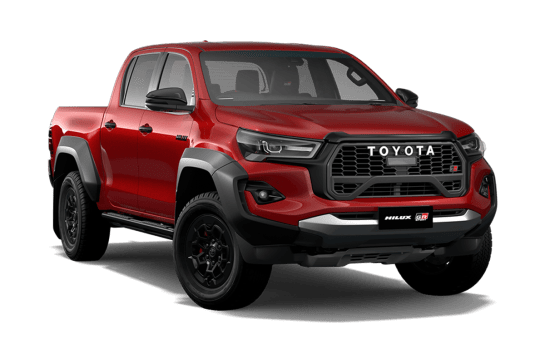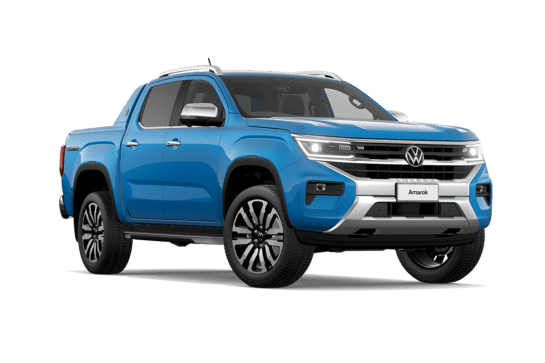
Mercedes-Benz Vito VS Isuzu D-Max
Mercedes-Benz Vito
Likes
- Fuel economy
- Performance/driver comfort
- 2500kg towing
Dislikes
- Purchase price
- Servicing costs
- Sub-one-tonne payload
Isuzu D-Max
Likes
- Off-road capability
- Improved ride and handling
- Suspension package
Dislikes
- Too many decals
- No power and torque increase
- Could do with more mods
Summary
Mercedes-Benz Vito
The latest VS20 Vito range, comprising Vito/eVito light commercials and Tourer/V-Class people movers, brings the first major facelift to Mercedes-Benz’s mid-sized (2.5-3.5-tonne GVM) van since 2015, along with numerous comfort, convenience, technology and safety upgrades.
The workhorse fleet is available in medium wheelbase (MWB) and long wheelbase (LWB) Panel Vans and Crew Cabs, with a variety of drivetrain specifications including the all-electric eVito LWB van.
We were recently handed the keys to one of the latest turbo-diesel variants to see how it measures up from a tradie/business perspective in one of Australia’s most competitive vehicle markets.
Read more about
- Tough work van levels up: 2025 Mercedes-Benz Vito, eVito vans and V-Class people mover get big refresh with electric variants to tackle E-Transit Custom and LDV eDeliver
- Mercedes-Benz eVito Panel Van 2024 review: GVM test
- Changing of the van guard: Mercedes-Benz vans like V-Class, Vito, and EQV to go more upmarket, at least 50 per cent electric by 2030 in next generation
| Safety rating | — |
|---|---|
| Engine Type | 2.0L turbo |
| Fuel Type | Diesel |
| Fuel Efficiency | 6.7L/100km |
| Seating | 2 seats |
Isuzu D-Max
Carmakers nowadays are increasingly entering into collaborations with vehicle-engineering companies in order to develop “special” vehicles.
Why?
Well, for one thing, car buyers now demand much more than a mere sticker pack on their 4WD if that vehicle has been marketed as a limited-edition/special-edition/whatever version of the standard vehicle on which it’s based.
Read more about
- Why it will be a while before Isuzu has an answer to the BYD Shark 6, Ford Ranger PHEV and GWM Cannon Alpha HEV: What we know so far about the 2028 Isuzu D-Max hybrid
- The end of a legendary engine? 2025 Isuzu D-Max and MU-X to get new 2.2-litre turbo-diesel in Thailand to fight Toyota HiLux and Ford Ranger but what does it mean for Isuzu 4JJ3's future in Australia?
- Isuzu D-Max 2025 review: Blade - Australian first drive
And these special vehicles have proven very popular because they benefit from the substantial engineering work undertaken away from the OEM.
You only have to look at the recent collaborations between Nissan Australia and Melbourne-based vehicle engineering company, Premcar, on the Navara and Patrol Warrior to see that Premcar and companies of the same ilk can be entrusted with conversion work, engineering upgrades and the fitment of off-road accessories in order to add real value to a vehicle.
And so it is that Isuzu has joined forces with Walkinshaw Automotive Group to develop the D-Max Blade.
Based on the LS-U+, the Blade was developed locally and among its enhancements over and above the D-Max on which it’s based, it has Aussie-tuned lifted suspension, a lightbar, underbody protection, light truck construction all-terrain tyres and some Blade-specific design enhancements.
But with the same powertrain as a LS-U+ and no power and torque improvements, is the Blade worthy of your consideration?
Read on.
| Safety rating | |
|---|---|
| Engine Type | 3.0L turbo |
| Fuel Type | Diesel |
| Fuel Efficiency | 8L/100km |
| Seating | 5 seats |
Verdict
Mercedes-Benz Vito8.3/10
The Vito 119 Panel Van LWB offers excellent performance and driver comfort, with styling and all-round refinement that could make it an appealing business partner. However, the absence of an ANCAP star rating and a sub-one-tonne payload limit could be deal-breakers for some tradies and fleets alike, along with a list price that exceeds its Toyota HiAce LWB equivalent by almost $30K. Therefore, only a potential buyer can decide if its positives outweigh its negatives.
Isuzu D-Max7.9/10
There’s a lot to like about the regular D-Max in terms of standard features, driver-assist tech, and all-round driveability – it’s an impressive 4WD with plenty of appeal as a daily driver.
And the Blade is even better – but not by a lot.
Walkinshaw’s work on the Blade has bolstered that appeal with conversion work, engineering upgrades and fitment of accessories and all of those elements are the kind of sensible changes an experienced 4WDer would usually make to their own stock-standard vehicle via the aftermarket.
And that’s a crucial point with these type of factory-modded vehicles: some people prefer to do the research, sourcing, purchasing and even the fitment of mods and accessories themselves rather than buy a ready-made adventure machine.
However, there’s no denying the convenience of a factory-backed and -accessorised 4WD ute or wagon, and Isuzu and Walkinshaw have proven, in the same way that Nissan and Premcar have, that these kinds of collaborations can yield positive results.
Do you need a Blade? No, and an LS-U+ might better suit your lifestyle. But do you want a Blade? Many a D-Max fan would say “Yes!” without hesitation.
Design
Mercedes-Benz Vito
Our LWB test vehicle rides on a 3430mm wheelbase, with 5370mm overall length and 1928mm width. Its 1916mm height ensures comfortable access to height-restricted areas like multi-storey car parks and underground loading zones and it has a reasonably tight 11.8-metre turning circle.
The rear-wheel drive chassis includes MacPherson strut front suspension, independent semi-trailing arm/coil-spring rear suspension, four-wheel disc brakes and rack and pinion steering.
It’s arguably the best-looking mid-sized van on the market with its bold frontal styling, purposeful wedge-shaped profile and elegant contours along its flanks.
The neat and functional interior has fabric-trimmed seats with an attractive speckled pattern on their facings. It also comes standard with a chrome interior package including air-vents, air con switch panel, interior door handles/surrounds and more.
The minimalist dash design results in a clean and uncluttered appearance. Even so, it still (thankfully) includes mechanical 'piano key' buttons for numerous functions and knurled barrel-style switches for controlling audio volume, cabin temperature, airflow direction and drive modes, to avoid the potential driver distraction of touchscreen prompts.
Isuzu D-Max
The Blade’s distinctive look builds on the D-Max’s most recent refresh treatment, in which the ute received new headlights, a bigger grille, redesigned wheels, and three-tier LED tail-lights.
In terms of dimensions, the Blade is 5308mm long (with a 3125mm wheelbase), 1810mm high and 1910mm wide (excluding wing mirrors).
In comparison, the LS-U+ is 5285mm long (with a 3125mm wheelbase), 1790mm high and 1870mm wide (excluding wing mirrors).
So, the Blade is longer, taller, wider (with wider wheels and wheel tracks, and 23mm-wider wheel-arch flares), beefier and more imposing than its standard stablemates.
Also, at a listed kerb weight of 2204kg, this ute is 89kg heavier than the LS-U+.
Exterior Blade extras (all of these are satin black) include front grille with ‘ISUZU’ lettering (and integrated, tinted 112-watt lightbar), front bumper cladding, fender flares with integrated air curtains, ‘BLADE’ lettering across the tailgate, tailgate badging, decals on the front bar, bonnet, doors and tailgate, tubular sidesteps, and a one-piece extended sports bar with integrated stop lamp.
It also gets widened mud flaps, an individually numbered 'BLADE' identification plaque in engine bay, 'Basalt Black' tailgate and door handles and door mirrors.
Inside there are ‘BLADE’ embroidered head rests, 'BLADE’ embroidered floor mats, 'BLADE’ embossed scuff plates, and an individually numbered 'BLADE' identification plaque on the transmission selector surround.
Everything looks good, except...
This vehicle would be a whole lot more appealing without the cheesy katana-style stickers everywhere and the huge ‘BLADE’ emblazoned on its rear end. The ‘Blade’ mentions on the scuff plates and on the front-seats head-rests are about all the decoration it should have.
The decals are shaped to bring to mind the blades of samurai swords I guess, but they look more like ice hockey sticks to me – and they shouldn’t be there.
This ute would benefit from more of a subtle look – it’s chunkier-than-thou appearance speaks for itself, so there’s no need for garish tarting up of any sort.
Practicality
Mercedes-Benz Vito
With its 2068kg kerb weight and 3000kg GVM, our test vehicle has a 933kg payload rating which falls short of the one-tonne-plus capabilities of numerous rivals.
However, it’s also rated to tow up to 2500kg of braked trailer, which is 1000kg more than Toyota’s dominant HiAce. And with its 5500kg GCM rating (or how much it can legally carry and tow at the same time) the Vito can carry its maximum payload while towing its maximum trailer weight.
Access to the cargo bay is through sliding doors on each side with 822mm openings, or the single tailgate (optional rear barn-doors are also available). With load floor dimensions of 3061mm length and 1695mm width, along with 1270mm between the rear wheel-housings, it will carry up to two standard Aussie pallets or up to three Euro pallets, secured with a choice of eight load-anchorage points.
Standard equipment includes the cargo bay’s internal walls and doors being lined from floor to roof height. The optional Cargo Pack's solid metal bulkhead serves as both a noise insulator for the cabin and a sturdy cargo barrier, with large assist handles on each side and a full-width open storage area at its base ideal for storing ropes, straps, load-padding etc.
Access to the driver’s cabin is through doors with a relatively narrow opening angle. The seat padding is firm and well-bolstered, with the Cargo Pack’s two-seater bench offering sufficient knee clearance from the dash for central passengers.
However, central seat foot-room is limited for those with large boots and the bench seat also has no adjustment, so we’d recommend only short trips for a crew of three.
Cabin storage includes a large-bottle holder and bin in the base of each door, with a smaller bin above. The dash offers storage slots below the air-vents, plus small-bottle/cupholders and three handy open storage areas across the dash-pad.
There’s also a single glove box, overhead glasses-holder and a useful-sized compartment hidden beneath the passenger seat which is accessed through a side hatch.
Isuzu D-Max
Isuzu could never be accused of ever sacrificing substance for style in the D-Max and that remains true in the Blade.
Not a lot separates the LS-U+ and Blade in terms of functionality or comfort because they share essentially the same interior with only a few differences.
The interior here is at heart a workhorse’s cabin with no fancy-schmancy elements that might spoil this ute’s primary purpose: work … and a fair dose of play, of course.
The latest round of D-Max upgrades brought with it enhanced interior materials, a new 9.0-inch touchscreen multimedia system as well as upgraded functionality across all dash tech, and more charging spots for smart devices.
And the Blade treatment doesn’t add anything other than the aforementioned style tweaks to that – which is fine.
The cabin has a pleasantly familiar feel about it and it’s an easy space in which to swiftly become comfortable and to figure out where all controls are (on-screen and real switches, buttons and dials) and how to use them.
The interior is adequately spacious with nicely supportive seats upfront and a reasonably comfortable bench-style pew for the three people at the rear.
The Blade has leather-accented upholstery, but there are expanses of durable plastic surfaces to cope with real-life mess.
Charging options are numerous – a mix of USB-A, USB-C and 12V upfront, and USB-A for the second row – and storage places include recesses for your everyday carry gear, a suitably deep centre console, as well as dual cupholders upfront and cupholders in the fold-down armrest, and bottle holders in the doors.
Back-row passengers get USB ports, directional air-con vents and shallow under-seat storage.
The tub is 1570mm long (at floor level), 1530mm wide (1122mm between the wheel-arches) and 490mm deep. It is a double-walled tub, with an under-rail tub liner, two cargo tie-down points, and it has tailgate assist.
Tub options for D-Max owners include a tonneau or roller cover (which offers at least some degree of security from thieves, and protection from rain, mud, snow etc), or an Isuzu or aftermarket canopy, although a canopy impacts the versatility of the load space because once it’s an enclosed area it makes it more difficult to carry long, awkward and/or large loads in the tub.
Price and features
Mercedes-Benz Vito
Our test vehicle is the Vito 119 Panel Van LWB, which like all light commercial models (except the eVito) comes standard with a 2.0-litre four-cylinder turbo-diesel engine and nine-speed automatic for a list price of $79,796.
Our example has also been fitted with a couple of factory options including a digital rear-view camera ($1031) and the 'Cargo Pack' ($2287) which adds a two-passenger front bench seat and full-width metal bulkhead with window, plus sturdy wood-flooring and bright LED lighting for the cargo bay.
These options bump the list price to $83,015, plus on-roads, so for such a sizeable spend you’d rightfully expect to get a lot more than just a prestigious badge as standard equipment.
Externally, the Vito delivers on that expectation with stylish 17-inch alloy wheels and 225/55 R17C tyres with a full-size steel spare, colour-coded front and rear bumpers, chrome grille highlights, black roof rails, rear window tint, multibeam LED headlights, LED tail-lights and classy LED puddle-lamps that project a Mercedes-Benz logo.
MY25 equipment upgrades fitted as standard include the latest 'MBUX' multimedia system with a big 10.25-inch LCD colour touchscreen, 'Hey Mercedes' voice command, wireless Apple CarPlay/Android Auto connectivity and more.
The driver’s instrument cluster gets a 5.5-inch central colour display and all models are now fitted as standard with a multifunction steering wheel with touch-sensitive controls, plus keyless start and an electronic parking brake replacing the old spring-loaded pedal version.
Standard safety has also been upgraded with active lane-keeping assistance, traffic sign recognition and tyre pressure monitoring.
Our 119 model also comes with complimentary metallic and non-metallic paint finishes, so the latest Vito is more indulgent than your typical steel-wheeled workhorse without compromising its core load-carrying capabilities.
Isuzu D-Max
The D-Max Blade has a national drive-away price of $76,990 ($78,900 RRP) at the time of writing (early Feb 2025), so it’s now the most expensive D-Max available, costing about $9000 more than the line-up’s former big Kohuna, the X-Terrain.
It’s also about $15,000 more than the mid-range LS-U+ on which it’s based.
Our test vehicle had a few extras onboard including the no-cost option premium paint (Sunstone Orange), a tow bar tongue ($215.05), 12-pin plug ($393.25), and an electronic brake controller ($896.05). Those extras fitted at the time of sale attract stamp duty of $80.85.
Price as tested, according to Isuzu, is $78,687.85.
Standard D-Max features include a 9.0-inch touchscreen multimedia system display (with wired and wireless Apple CarPlay and Android Auto), eight-way power-adjustable driver’s seat, leather-accented upholstery, heated front seats, reversing camera with dynamic guidelines, a rear-diff lock, Rough Terrain mode and more.
Blade extras of substance include lifted suspension (finished in Isuzu red), 3mm-think steel bash plate underbody protection (in Isuzu red), eight-tonne load rated recovery points with cross-bracing, (finished in Isuzu red), and satin black 17x8.5-inch +28 flow-formed alloy wheels with 275/65R17 Goodyear Wrangler Duratrac RT all-terrain tyres.
It also gets a stack of design-related extras which will get a mention in the Design section (below).
Exterior paint choices include 'Moonstone White' pearl, 'Basalt Black' mica, 'Granite Grey' mica or 'Sunstone Orange' mica.
Under the bonnet
Mercedes-Benz Vito
The 2.0-litre four-cylinder intercooled turbo-diesel meets Euro 6 emissions standards using AdBlue.
It produces 140kW of power at 4200rpm and 440Nm of torque between 1350-2400rpm. This is paired with a smooth and intuitive nine-speed torque converter automatic, which offers three drive modes comprising 'Comfort' (the standard default setting), 'Sport' and 'Manual'. The latter’s sequential manual-shifting is via steering wheel-mounted paddles.
Isuzu D-Max
The D-Max Blade has the D-Max line-up’s 3.0-litre four-cylinder turbo-diesel engine – producing 140kW at 3600rpm and 450Nm from 1600 to 2600rpm – and it’s matched to a six-speed auto.
Just to be clear: the Blade does not have any power or torque advantages over the standard D-Max.
This engine and auto combination form part of a proven powertrain and while this ute is sluggish when accelerating and it’s not the most dynamic vehicle to drive, the D-Max has a real tractability about it that negates most other flaws.
It has part-time 4WD, with high- and low-range. Driver-assist tech, such as rough terrain mode, has been tweaked with the aim of making Isuzu 4WDs perform off-road even better than before.
Efficiency
Mercedes-Benz Vito
Mercedes-Benz claims official combined average consumption of only 6.7L/100km but the dash readout was showing 8.3 at the completion of our 342km test, of which about one third was hauling a heavy payload.
This was lineball with our own figure, calculated from fuel bowser and tripmeter readings, of 8.5L/100km. Any mid-sized van that can produce genuine sub-10L economy in 'real world' urban use gets a big tick from us and, based on our figures, should produce an excellent driving range of around 800km from its 70-litre diesel tank.
Isuzu D-Max
Official fuel consumption for this D-Max is 8.0L/100km on a combined cycle.
Actual fuel consumption on this test, from pump to pump, was 10.6L/100km for the D-Max.
The D-Max has a 76-litre fuel tank so, going by those fuel consumption figures, you should be able to get a driving range of about 717km from a full tank.
Driving
Mercedes-Benz Vito
The Vito offers exceptional comfort for the driver, with the prestige look and feel of its leather-wrapped and height/reach adjustable steering wheel combined with a driver’s seat offering a fold-down inboard armrest, height/reach-adjustable lumbar support plus adjustable base-cushion rake and length.
A left footrest would be icing on this comfort cake, but in its absence there’s plenty of clear floor space in which to rest your left foot.
Eyelines to all mirrors are good and although the centre-seat headrest for the Cargo Pack bench partly blocks the central mirror’s rear view, most of the tailgate’s window remains clear.
Given the huge blind-spot over the driver’s left shoulder created by the cargo bay’s solid walls, the Vito’s blind-spot monitoring, rear cross-traffic alert, 360-degree camera etc are effective in creating a safety zone in such a vulnerable area.
The steering feel is superb, as we’ve come to expect from Mercedes-Benz commercial vehicles. Cabin noise remains commendably low even at highway speeds, during which the engine needs only 1700rpm to maintain 110km/h. However, tyre noise can become intrusive on coarse bitumen surfaces.
Engine response in city and suburban use is excellent, as the nine-speed auto efficiently keeps the turbo-diesel operating within its 1350-2400rpm peak torque zone. And 440Nm of torque is competitive for a van this size, ensuring strong acceleration with or without a load.
The driver-selectable Sport and Manual drive modes provide greater driver engagement and direct control respectively, but for most driving the default Comfort setting provides a commendable balance of comfort and engine response which allows the Vito to shine in a working role.
We proved this after loading 770kg into the cargo bay, which with driver equalled a total payload of 870kg which was only about 60kg under its legal limit. The coil-spring rear suspension compressed 50mm under this weight, which still left more than enough suspension travel to ensure there was no bottoming-out during our test drive.
This included our usual 13 per cent gradient, 2.0km set climb at 60km/h, in which it downshifted to fourth gear and 2000rpm (bang in the middle of its peak torque band) to easily reach the summit.
Engine-braking on the way down, in a manually-selected second gear, was impressive for an engine with relatively small displacement restraining almost 900kg in payload, requiring only one firm application of the brake pedal. Overall, it proved to be a competent load-hauler.
Isuzu D-Max
The D-Max has never been a stand-out performer on-road in the ute segment, but it’s never been atrocious either.
The engine and auto combination yield a solid drivability rather than any liveliness, which works fine in this ute package.
Suffice to say, the D-Max is consistently middle of the pack when it comes to ride and handling or refinement comparisons, but again that suits this ute package.
Besides, the D-Max is a body-on-frame ute with leaf spring rear suspension, so it can’t be expected to produce sportscar-like driving qualities, though the most recent upgrades to the D-Max did improve the steering and driver-assist tech.
But then came the Blade project, which wasn’t about improving the ute’s around-town driveability: Isuzu brought in the Walkinshaw Automotive Group, one of Australia’s leading automotive engineering firms, to make a version of the D-Max that was even better at off-roading than the standard unmodified D-Max.
Boiling down thousands of kilometres and man-hours of Walkinshaw’s work on the Blade into the most salient points for this yarn does not accurately reflect the effort of those involved in the years-long process … but here goes anyway: Walkinshaw has designed, engineered and remanufactured some of Australia’s most iconic nameplates, and, while the Blade reworking doesn’t introduce any new mechanical or driver-assist tech set-ups to the D-Max package, the introduction of new all-terrain tyres, wider wheel track and Aussie-tuned suspension (including Monroe 35mm MTV twin-tube dampers with lifted spring seats) has added a welcome measure of composure to this ute’s on-road behaviour.
And Isuzu big wigs must be feeling a bit chuffed at this point in time because Walkinshaw’s off-road mods have produced real results where they count most: off-road.
The standard D-Max in LS-U+ guise is an impressive 4WD ute, but the Blade version is a touch better on a variety of terrain for a number of reasons.
For starters, the Blade’s Walkinshaw-developed suspension set-up, with those 35mm twin-tube dampers in the mix, yields a more agreeable drive, with more comfort and better chassis control than a regular D-Max on fast dirt tracks and corrugated gravel roads. It manages to subdue most of the lumps and bumps you’re bound to drive over on your way to a beach- or bush-camping destination.
The Blade’s wheel track – at 1602mm, 32mm wider than the LS-U+’s 1570mm – gives this ute a slightly more planted posture than its standard stablemate for improved stability and handling.
And while the Blade’s tyres aren’t gung-ho mud-terrains or something similar, its 275/65R17 Goodyear Wrangler Duratrac RT all-terrain tyres do work sufficiently well on-road and off.
For low-range 4WDing, the Blade has all of the D-Max good stuff – including a tractable engine with plenty of low-down torque and a recalibrated off-road traction control (part of the most recent D-Max upgrades) – but its ground clearance (244mm vs the LS-U+’s 240mm) and off-road angles (29.2° approach, 19.2° departure and 25.2° breakover vs the LS-U+’s 30.5°, 19.0°, and 23.8°) don’t represent as much of an improvement over its stablemate as you’d expect in a vehicle touted by Isuzu as “an off-road ute without compromise” and “an unparalleled combination of off-road performance and rugged reliability”.
The Blade feels vulnerable to underbody knocks from rocks and the like, but it has 3mm-thick steel bash plate protection so there’s no need to lose any sleep over a few ‘rubbing dirt’ moments.
Its tubular sidesteps at least seem hardier than the standard D-Max’s sidesteps and seem able to cop knocks from rocks without crumpling.
If there’s any need for a vehicle recovery, the Blade has eight-tonne load-rated recovery points (with bracing between chassis rails for torsional rigidity) to work with.
Also, if you’re thinking about using your Blade as a touring platform, at a listed kerb weight of 2204kg, it is 89kg heavier than the LS-U+, and its payload is 896kg (down form the LS-U+’s 990kg). GVM is 3100kg, GCM is 6000kg.
Towing capacities remain at 750kg (unbraked) and 3500kg (braked).
Safety
Mercedes-Benz Vito
Although Vito vans built from January 2023 are still without an ANCAP star rating, models built from May 2024 scored 90 per cent for collision avoidance in ANCAP’s Commercial Van Safety Comparison, earning the highest Platinum grading for scores of 80 per cent and above.
The latest Vito’s active safety additions join a suite of existing features including front/thorax/window airbags for driver and passenger, AEB, lane-keeping, blind-spot and rear cross-traffic alert, daytime running lights, front/rear parking sensors and lots more.
Isuzu D-Max
The D-Max has the maximum five-star ANCAP safety rating.
As standard, it has auto emergency braking (AEB), eight airbags (dual front, curtain, side, driver's knee and far side) and a comprehensive suite of driver-assist tech including forward collision warning, adaptive cruise control, lane departure warning, a tyre-pressure monitoring system and a raft of other driver-assist tech.
Isuzu's Intelligent Driver Assistance System (IDAS) also includes AEB with turn assist, 'Intelligent' adaptive cruise control, traffic sign recognition, lane departure prevention, lane keeping assist, emergency lane keeping, blind spot monitoring, rear cross-traffic alert, rear cross-traffic brake, digital reversing camera and trailer sway control.
Ownership
Mercedes-Benz Vito
The Vito comes with a five years/250,000km warranty which includes 24-hour roadside assistance.
Scheduled servicing is 12 months/25,000km whichever occurs first. Capped-price servicing for first five scheduled services totals $5555, or a pricey average of $1111 annually.
Isuzu D-Max
The D-Max has a six-year/150,000km warranty and seven years of roadside assistance when you have your D-Max always serviced at a participating Isuzu ute dealer. That warranty is okay in terms of years, but unlimited kilometres would be a welcome sweetener.
Service intervals are scheduled for every 12 months or 15,000km, whichever occurs soonest.
Capped-price servicing covers the first five scheduled services for 24MY and later vehicle models (up to five years/75,000km - whichever occurs first) – at a flat price of $449 for each service.

